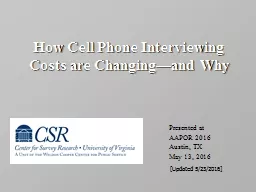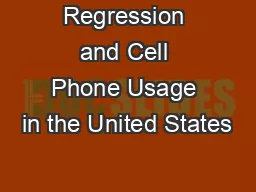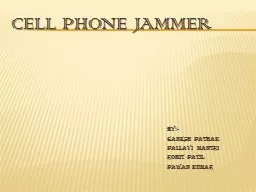PPT-How Cell Phone Interviewing
Author : conchita-marotz | Published Date : 2018-11-04
Costs are Changingand Why Presented at AAPOR 2016 Austin TX May 13 2016 Updated 5232016 2 A unit of the Weldon Cooper Center for Public Service Thomas M Guterbock
Presentation Embed Code
Download Presentation
Download Presentation The PPT/PDF document "How Cell Phone Interviewing" is the property of its rightful owner. Permission is granted to download and print the materials on this website for personal, non-commercial use only, and to display it on your personal computer provided you do not modify the materials and that you retain all copyright notices contained in the materials. By downloading content from our website, you accept the terms of this agreement.
How Cell Phone Interviewing: Transcript
Download Rules Of Document
"How Cell Phone Interviewing"The content belongs to its owner. You may download and print it for personal use, without modification, and keep all copyright notices. By downloading, you agree to these terms.
Related Documents














